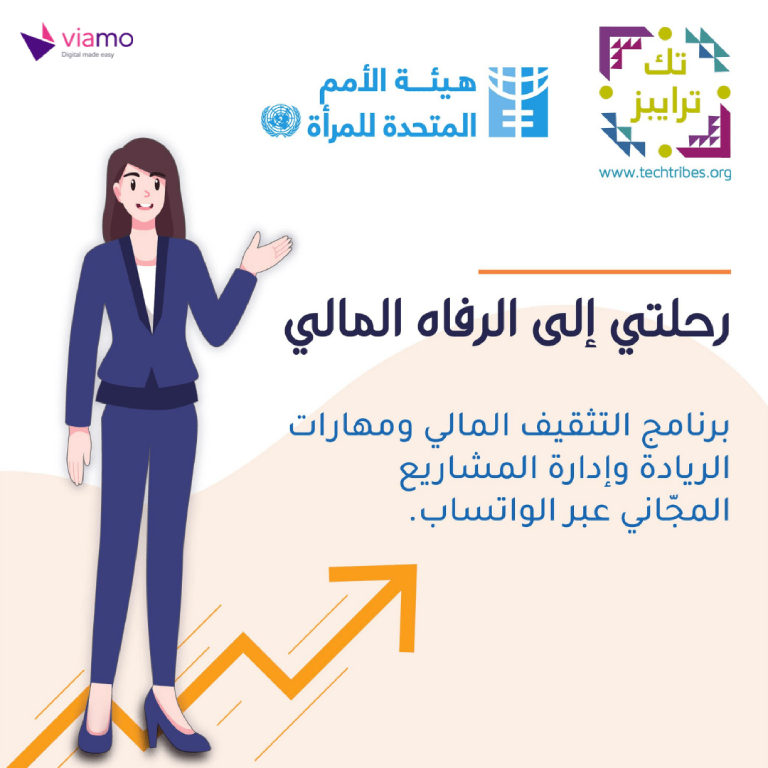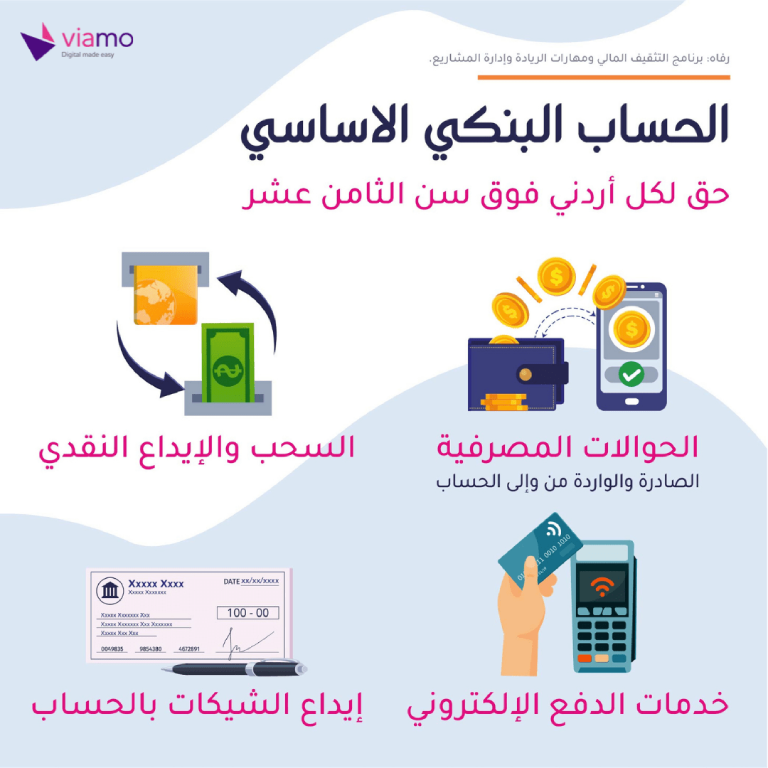Building the economic resilience of women in Jordan through business and financial literacy
Solution: Digital CampaignDigital Survey
In association with

Overview
Viamo was tasked with implementing an innovative UN Women project together with local partner Tech Tribes. Both organizations explored ways to provide easier and more measurable access to services provided by UN Women in Jordan, with a focus on Syrian refugee host communities. The target audience (Jordanian women and Syrian women in host communities) gained access to training and capacity-building opportunities through centers for building women’s resilience and empowerment through access to multi-sectoral services. These physical spaces are also known as “Oasis Centers”. For most women, committing to capacity building and training programs pose numerous challenges, especially the need to commute.
12
26,000
1482
3
Challenge
The Jordanian economy faces numerous developmental challenges, including an annual GDP growth rate of just 2.1%, lack of enterprise competitiveness, especially among women-owned businesses, as well as persistently high unemployment due to barriers associated with cultural and gender norms. A low natural resource base means that Jordan’s economic future depends on a digital and entrepreneurial economy that is innovative and internationally competitive with the capacity to create jobs to ensure economic stability and welfare, especially for women.
Women continue to dominate small and medium-sized creative businesses often focusing on supporting locally-produced crafts. Despite this high percentage, these women-led businesses still struggle the most with access to finance and entrepreneurship education. In spite of their high educational level, only 14% of Jordanian women are part of the labor market according to the International Labour Organisation (ILO).
This is the result of societal pressure, lack of convenient transportation systems and childcare services. Moreover, low national educational standards and lack of employability skills are preventing women from being hired by the private sector.

Intro Lesson (on Whatsapp) Objectives & Expectations: “Free Awareness Program on Financial Inclusion, Entrepreneurship, and Project Management through Whatsapp.

(Whatsapp) Lesson-specific content: “Having a bank account is a right for every Jordanian above 18 years old. Having a bank account allows you to send and receive transactions, save and deposit money, use e-payments, and deposit checks in your account.”
In order to scale up the national effort to have women contribute to GDP growth, strong participation and development of women’s employable profiles are needed, as is support for women entrepreneurs, addressing transportation and childcare barriers and providing tailored support to women entrepreneurs and women-led businesses in acquiring skills and knowledge necessary for their innovative solutions and business ideas to grow.
What we did
We partnered with UN Women to support more than 500 Jordanian and Syrian women, as well as women-led Small and Medium-sized Enterprises (SMSEs) in over 8 refugee host communities in Jordan, in an effort to invest in digital engagement channels.
The project, which utilized a multi-channel approach, delivered useful information through SMS, IVR and WhatsApp Chatbot, and enabled women to be more financially resilient by providing them with interactive educational modules on banking, finance, entrepreneurship and mobile money.
Findings
A digital survey using Interactive Voice Response (IVR) was sent to 1,482 women to better understand their internet and mobile access needs, as well as assess their knowledge and skills gaps in financial literacy and micro-entrepreneurship.
What we learned
Economic enhancement supports women participation in the labor market through innovative partnerships and platforms with the private sector, civil society and government.
As WhatsApp is a relatively new platform with many unknowns for the development sector, it is imperative that all stakeholders gain an understanding of it. Engaging contacts ahead of the project launch date with IVR calls and SMS alerts can boost engagement rates.
User engagement research, optimized user experience and personalized content are the keys to WhatsApp Chatbot success. Our experience makes clear the importance of understanding how WhatsApp users consume content. Involving members of the design team in optimizing user flows that focus on human centered design and personalized user journeys shows the effectiveness and affordability of engaging with field staff on a regular basis.
By developing and deploying content for specific audiences using multiple channels, we increased opt-in and engagement. The SMS notifications and reminders also included the link to the URL of the chatbot, so those who missed anything could see it again.
The use of multimedia content types like texts, emojis, images, audios, links to videos and quizzes also improved the user experience and engaged users.
Future
By using multiple channels to deliver information, a greater number of young Jordanian and Syrian female entrepreneurs gained a better understanding of market competitiveness needs as well as critical skills and knowledge in financial literacy, access to financing, and online business integration.
The future of projects that seek to increase the value per user by identifying and capturing opportunities lies in omni-channel content distribution. Besides an improved user experience, reducing churn rates and increasing their motivation to participate, platforms like WhatsApp have distinct advantages. By immediately responding to users’ queries in real-time and allowing them to take quick action on the user journey. WhatsApp’s primary feature is securing communication with end-to-end encryption, which also helps build trust and loyalty.
